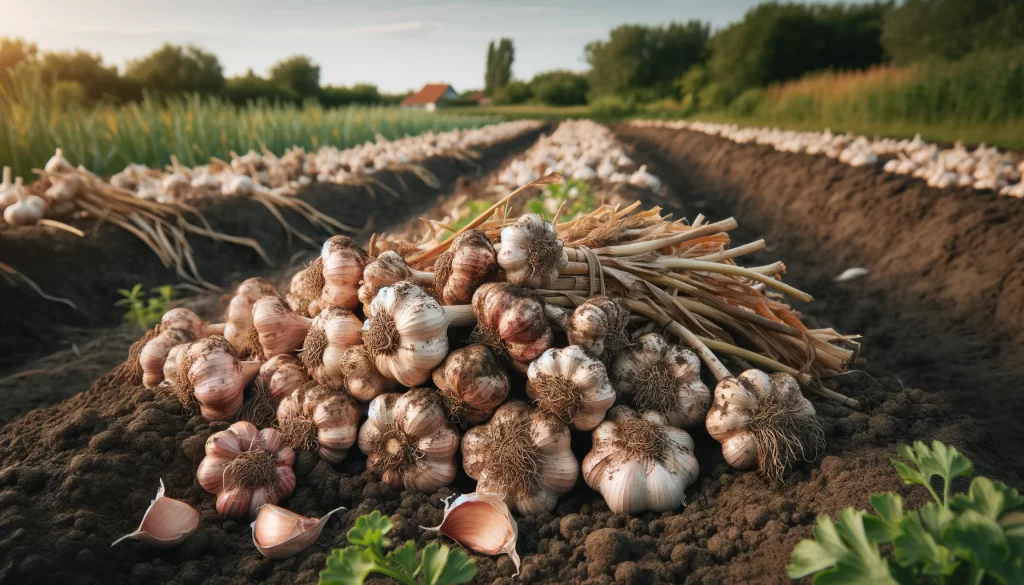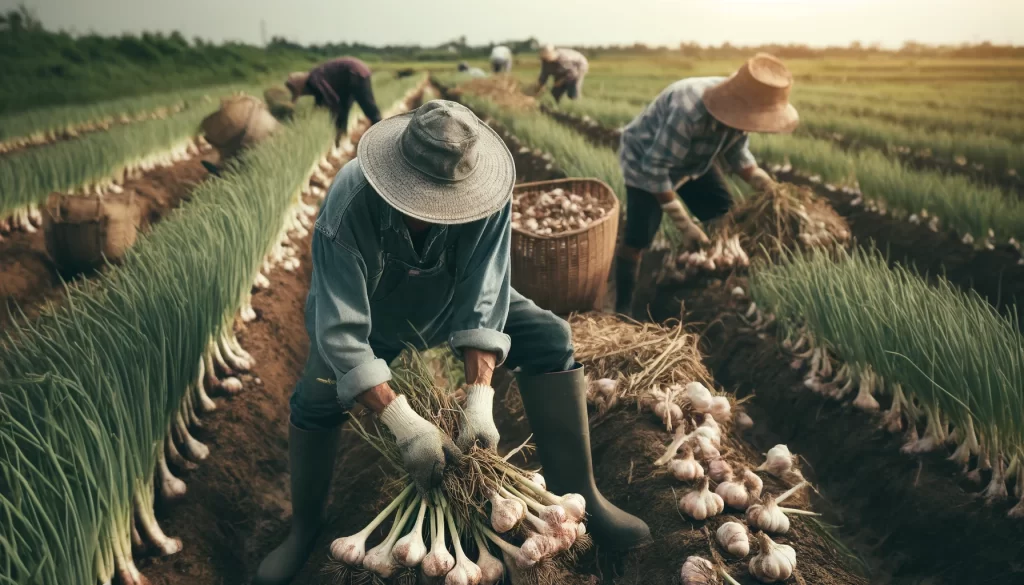Garlic (Allium sativum) is a perennial herbaceous plant belonging to the Amaryllidaceae family, known for its characteristic bulb formed by multiple cloves. Native to Central Asia, garlic has been cultivated and used for thousands of years in both cuisine and traditional medicine due to its health benefits. It is a fundamental ingredient in various cuisines around the world, providing a distinctive flavor and aroma to a wide variety of dishes.

In addition to its culinary uses, garlic is valued for its medicinal properties. It contains bioactive compounds such as allicin, which is released when garlic is crushed or cut, and has antimicrobial, anti-inflammatory, and antioxidant effects. These compounds have been associated with cardiovascular health benefits, immune system strengthening, and improved digestion. For these reasons, garlic is appreciated not only as a flavorful food but also as a natural remedy in various cultures.
Characteristics of Garlic:
- Bulb: The most well-known and used part of garlic is the bulb, which consists of numerous cloves wrapped in a thin, papery skin.
- Leaves: Garlic produces long, narrow green leaves.
- Flowers: Its flowers are small, usually white or pink, and grouped in an umbel-shaped inflorescence.
- Roots: Fibrous and shallow root system.

Garlic Planting Guide
1. Site Selection:
- Sunlight: Choose a location that receives full sun, at least 6-8 hours a day.
- Soil: Prefers well-drained, light to medium soils with good organic matter content. Avoid compacted or excessively clayey soils.
2. Soil Preparation:
- Tillage: Perform deep tillage to loosen the soil and improve aeration.
- Amendments: Incorporate compost or organic fertilizer to enrich the soil. A pH between 6.0 and 7.5 is ideal.
- Fertilization: Apply balanced fertilizers based on the results of a prior soil analysis.
3. Clove Selection and Preparation:
- Planting Material: Use healthy, good-sized garlic cloves selected from mature, disease-free bulbs.
- Preparation: Carefully separate the cloves from the bulb, keeping the skin intact.
4. Planting Time:
- Season: Depending on the region, planting can be done in the fall (preferred in temperate climates) or early spring.
5. Planting:
- Depth and Spacing: Plant the cloves at a depth of 2-3 cm, with the tip facing up. Leave a distance of 10-15 cm between plants and 30-40 cm between rows.
- Initial Watering: Water well after planting to ensure good contact between the cloves and the soil.
6. Crop Management:
- Irrigation: Maintain uniform soil moisture, avoiding waterlogging. Reduce watering in the final weeks before harvest.
- Weed Control: Regularly control weeds to avoid competition for nutrients and light.
- Continuous Fertilization: Apply additional fertilizers during growth stages as needed.
- Common Pests: Monitor for pests such as the garlic weevil and onion fly. Use traps and biological treatments when necessary.
- Diseases: Practice crop rotation and apply specific fungicides to control fungal diseases such as rust and downy mildew.
8. Harvest:
- Maturity Indicators: Harvest is done when the lower leaves begin to dry, typically 90-120 days after planting.
- Harvesting Method: Carefully extract the bulbs using a fork or spade, avoiding damage to the bulbs.
9. Post-Harvest:
- Drying: Place the bulbs in a ventilated, shaded area to dry for 2-3 weeks.
- Cleaning and Grading: Clean and grade the bulbs before storing them.
- Storage: Store the bulbs in a cool, dry, and well-ventilated place to prolong their shelf life.
This guide will help you achieve a successful and high-quality garlic crop. Good luck with your planting!
 AgronoBlog – Agriculture Blog
AgronoBlog – Agriculture Blog